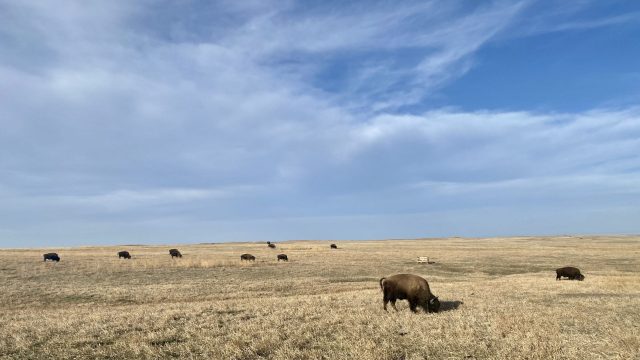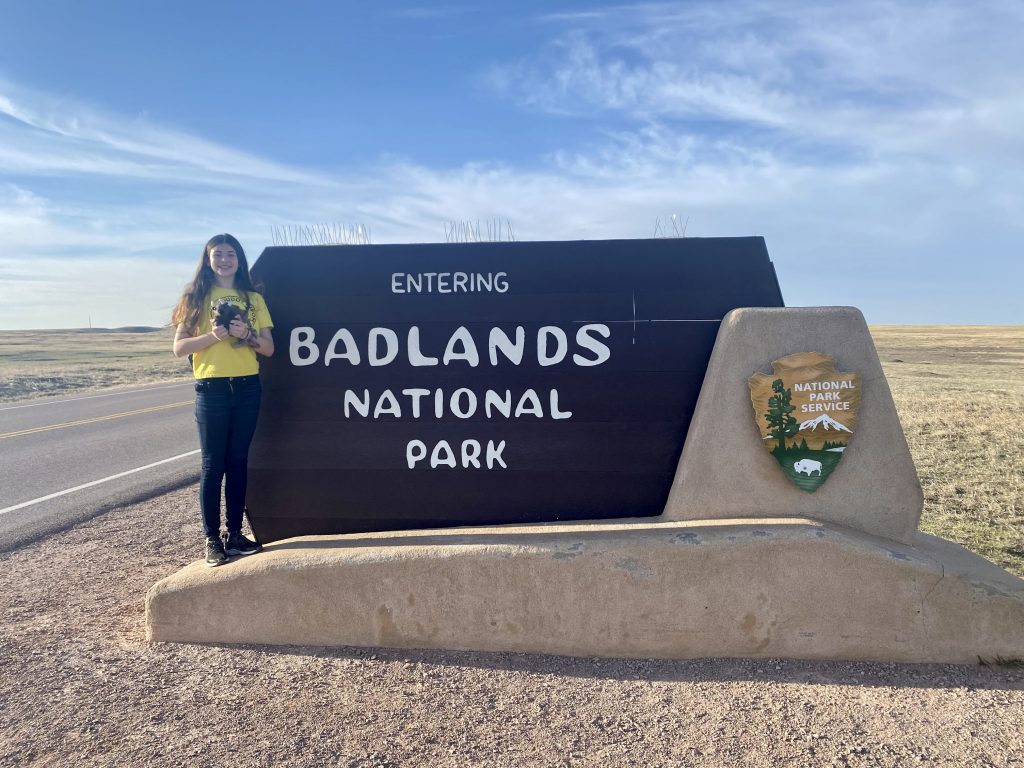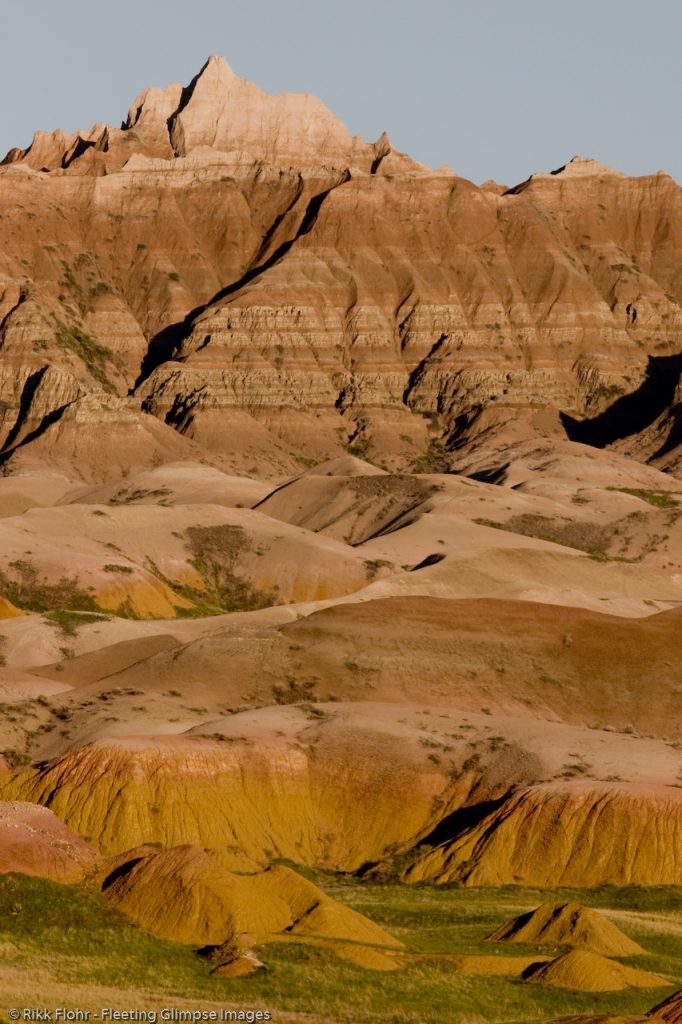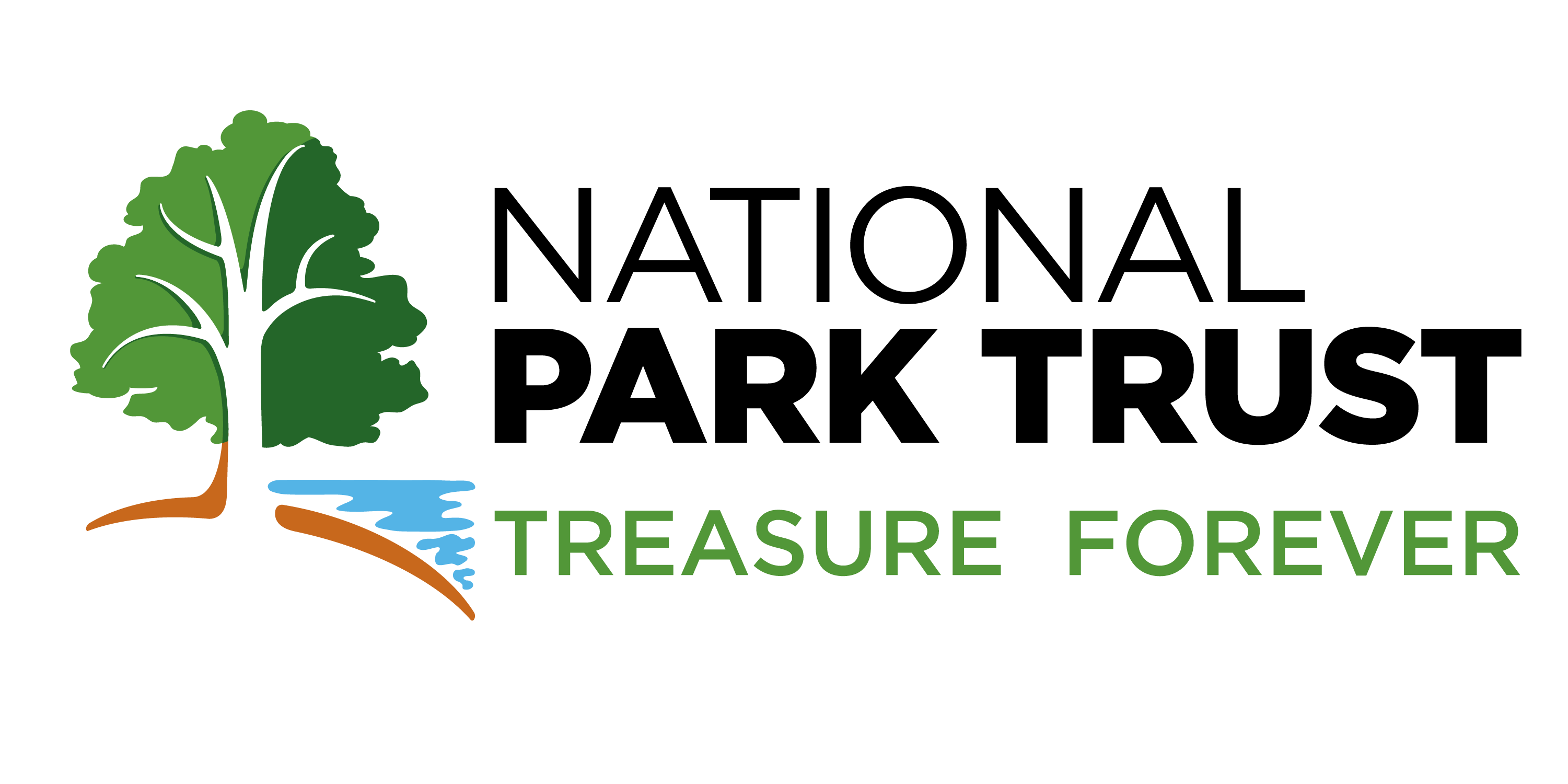Badlands – Great Park!

Youth Leader Joslyn and Buddy took a trip to Badlands National Park, check out their adventures below!

My family and Buddy Bison drove six and a half hours to arrive at the entrance at Badlands National Park in South Dakota. At first glance, it doesn’t look like anything is alive there. There aren’t any trees and I could see were miles of hills made of rock.
As soon as we actually entered the Park I realized how wrong my first impression was. We were greeted by dozens of bison. That is when Buddy Bison and I discovered that there is a lot of life inside the park!
One animal we saw a lot of was prairie dogs. These adorable creatures pop out of their holes and make a yipping sound to talk to each other. My little sister Maggie and I pretended that they were saying hello to us. The prairie dogs have “towns” where you will see hundreds of holes grouped in a small area.
We also saw bighorn sheep basking in the sunlight, mule deer, pronghorn antelope, and many birds.
The Badlands is also home to hidden animals, such as the black-footed ferret. These nocturnal animals sleep up to 21 hours a day and live underground so they aren’t often seen by visitors. We decided to purchase a toy version of this creature at Ben Reifel Visitor Center
One reptile we were happy not to see was the venomous rattlesnake. We saw warnings of the slithery threat throughout the park, so we were alert to listen for their rattle sound when we hiked.
Although visitors tend to gather at scenic points and the gift shop, as you drive through the park you will find lots of places of solitude within its 244,000 acres. Being the only people for miles was very calming.

We got out of our car to climb the Yellow Mounds. They aren’t a bright yellow, but more like the color of mustard. The mounds get their color from a mineral called goethite. Buddy Bison and I climbed one of the yellow mounds and saw a beautiful view of the park.
Geologists and those that love rocks should definitely visit the Badlands. According to the National Park Service, the park has sandstone, siltstone, mudstone, claystone, limestone, volcanic ash, and shale. Ribbons of color, such as a rusty hue, are seen horizontally throughout the rocks. These layers of color show different types of fossils, rocks, and minerals deposited at different times.
An interesting fact about the Badlands is, according to the National Park Service, the rocky hills are eroding at a rate of one inch per year. This is a fast rate for rocks to erode! NPS makes the comparison to the nearby granite of the Black Hills, which only erodes at one inch per 10,000 years. Within 500,000 years the park will be flat! So don’t wait too long to visit.
When you do visit here are a few tips that Buddy Bison and I learned:
- Bring binoculars! You don’t want to get too close to wild animals, so it’s best to view from a distance
- Have a camera ready! We saw some visitors with large cameras and lenses to capture the landscape and the animals.
- Bring water! With no trees for shade, it gets hot there!
- Have plenty of gas in your car. There aren’t many places to get gas around the park.







